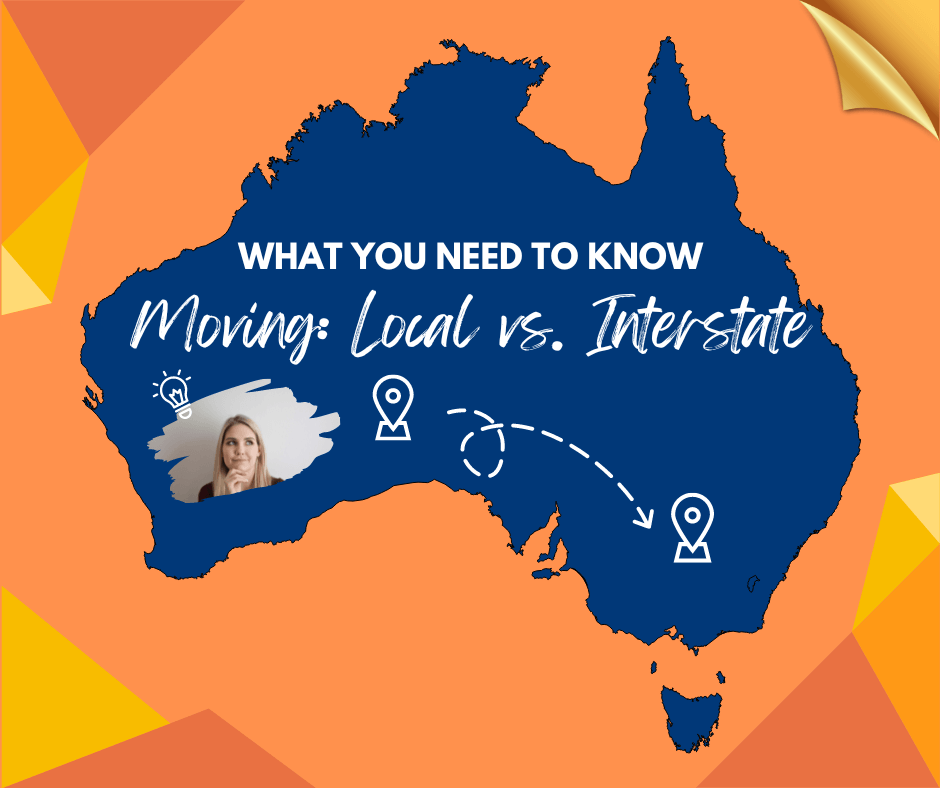


Moving from one place to another is a significant life event that requires careful planning, consideration, and execution. Whether it’s a short distance move within your city or a cross-country relocation, there are important factors to take into account. Local and interstate moves each come with their own set of challenges, costs, and considerations. In this article, we’ll explore the key differences between these types of moves, answer common questions, and provide essential facts to help you make informed decisions.
Question: What defines a local move versus an interstate move?
Answer: A local move is typically defined as one that occurs within the same city or metropolitan area. An interstate move, on the other hand, involves crossing state lines, regardless of the distance.
Fact: The exact distance that constitutes an interstate move can vary depending on state laws, but it generally involves crossing a state border, even if it’s just a short distance.
Question: Are local moves less expensive than interstate moves?
Answer: Local moves are often less expensive than interstate moves. The cost of an interstate move is influenced by factors such as distance, weight of belongings, fuel costs, and any additional services required.
Fact: The American Moving and Storage Association states that the average cost of an interstate move is significantly higher than that of a local move due to the greater distance and logistics involved.
Question: Are there different regulations for local and interstate moving companies?
Answer: Yes, there are differences. Interstate moving companies are required to be registered with the Federal Motor Carrier Safety Administration (FMCSA) and possess a USDOT number. Local movers may need to follow state-specific regulations, but they generally have less federal oversight.
Fact: Before hiring a moving company, it’s crucial to verify their licensing and insurance to ensure your belongings are protected during transit.
Question: Is the planning process different for local and interstate moves?
Answer: The planning process for both types of moves involves packing, coordinating logistics, and notifying relevant parties. However, interstate moves require more extensive planning due to longer travel times and potential delays.
Fact: Interstate moves often necessitate more advanced scheduling to accommodate the longer distance and potential regulatory requirements.
Question: How is packing and transportation different for local and interstate moves?
Answer: For local moves, belongings might be transported in one trip using a single truck. In contrast, interstate moves often involve multiple stops, potential transfers between trucks, and longer travel times.
Fact: Interstate moves often require more robust packing techniques to withstand the rigours of longer transportation and potential handling by multiple parties.
Question: Are there differences in delivery times for local and interstate moves?
Answer: Generally, local moves have shorter delivery times since the distance is shorter. Interstate moves might have a wider delivery window due to the longer travel distance.
Fact: Interstate moves’ delivery times can vary based on factors such as distance, weather, road conditions, and any specific delivery arrangements.
Question: How do you select a moving company for local or interstate moves?
Answer: Research is key. Obtain quotes from reputable moving companies, check online reviews, verify licensing and insurance, and ask for recommendations from friends or family.
Fact: The Better Business Bureau and online platforms like Yelp and Google Reviews can provide valuable insights into a moving company’s reputation and customer experiences.
Question: Are there specific packing strategies for local and interstate moves?
Answer: While the basics of packing apply to both types of moves, interstate moves require more meticulous packing due to the longer travel distance. Fragile items should be well-protected, and special attention should be given to items that might be susceptible to temperature changes or extended transit times.
Fact: Labelling boxes with a clear indication of their contents and whether they’re fragile can help movers handle them appropriately, reducing the risk of damage during transportation.
Question: Do local and interstate moves have different storage needs?
Answer: Depending on the circumstances, both types of moves might require temporary storage solutions. Interstate moves often involve longer transit times and might necessitate temporary storage until the new residence is accessible.
Fact: Many moving companies offer storage facilities where you can store your belongings for a specified period, which can be particularly helpful during an interstate move.
Question: Do local and interstate moves have varying environmental impacts?
Answer: Interstate moves typically have a larger carbon footprint due to the longer transportation distances involved. Local moves, while generally more environmentally friendly, still have their impact but may be less pronounced.
Fact: To minimise the environmental impact of your move, consider donating or recycling items you no longer need and opting for eco-friendly packing materials.
Question: Is there more paperwork involved in an interstate move?
Answer: Yes, interstate moves often require more paperwork, including a bill of lading, inventory list, and various forms related to federal and state regulations. Local moves might have less paperwork, mainly involving the moving company’s contract.
Fact: Keep all relevant documents organised in a designated folder to ensure a smooth process and to have a record in case of any issues.
Question: How do local and interstate moves affect pets and plants?
Answer: Both types of moves can be stressful for pets and plants, but interstate moves require more planning. Research pet regulations for the destination state and plan for the well-being of your plants during the longer transit of an interstate move.
Fact: Some states have regulations regarding pet entry, requiring health certificates or vaccinations, so make sure to prepare for these requirements in advance.
Question: How do local and interstate moves impact personal adjustment and cultural differences?
Answer: Both local and interstate moves involve adapting to a new environment, but interstate moves might bring about more significant changes in terms of culture, lifestyle, and local norms. Moving to a new state may introduce you to different customs, laws, and even regional accents.
Fact: Researching and understanding the culture and lifestyle of your new location can help you prepare for the transition and make the adjustment smoother.
Question: Is it easier to integrate into a local community compared to an interstate community?
Answer: Integrating into a local community can sometimes be easier due to shared geographical and cultural context. In contrast, joining an interstate community might require more effort to build new connections and become familiar with the local community dynamics.
Fact: Joining local clubs, attending community events, and participating in social activities can help speed up the integration process, whether you’re moving locally or interstate.
Question: How does moving impact education for children in local and interstate moves?
Answer: Both types of moves can disrupt children’s education, but interstate moves might involve changing school systems, curricula, and regulations. Local moves within the same school district can be less disruptive in terms of education continuity.
Fact: Before an interstate move, research schools in the new area and consider visiting them to ensure a smooth transition for your children.
Question: Are there differences in healthcare access between local and interstate moves?
Answer: Interstate moves might require finding new healthcare providers and adjusting to a different healthcare system. Local moves within the same area often involve less disruption in terms of healthcare access.
Fact: Before an interstate move, ensure you understand your new healthcare options and transfer medical records to your new providers.
Question: Do local and interstate moves have varying tax implications?
Answer: Interstate moves might lead to changes in state income tax rates, property taxes, and other tax-related considerations. Local moves within the same jurisdiction might have less impact on your tax situation.
Fact: Consult a tax professional to understand the tax implications of your move, especially if you’re relocating to a different state.
Question: How do emotional aspects differ between local and interstate moves?
Answer: Both types of moves can be emotionally challenging, but interstate moves might evoke stronger feelings of homesickness and adjustment due to the greater physical and cultural distance. Building a support network in a new state can be crucial.
Fact: Staying connected with family and friends through regular communication and utilising online platforms can help alleviate the emotional challenges of an interstate move.
Moving encompasses more than just transporting belongings—it’s a multifaceted journey of practical, financial, emotional, and logistical considerations. This exploration of local and interstate moves has highlighted the nuances defining each type of relocation.
We’ve covered the distinctions between local and interstate moves, including their regulatory variations, cost disparities, and planning intricacies. From understanding packing techniques to selecting the right moving company, you’ve gained valuable insights into the process.
Moreover, we’ve emphasised the significance of timing, environmental consciousness, and the well-being of pets and plants. Community integration and emotional adjustments have also been discussed as vital aspects to address during these transitions.
The overarching lesson is that every move presents an opportunity for growth, change, and fresh experiences. By recognising the unique aspects of each move and being informed, you can navigate challenges more effectively.
So, whether you’re venturing just down the road or embracing a state-crossing adventure, remember that moving isn’t just about logistics—it’s a chance to craft a new chapter in your life story. Adapt, learn, and thrive in your new environment, regardless of the distance.
Chat with our Team to LEARN MORE or 📞1300 820 861
1. Is it more expensive to move interstate than locally?
– Yes, interstate moves are generally more expensive due to factors like distance and logistics.
2. How can I find a reliable moving company for my relocation?
– Research reputable moving companies, read online reviews, and ask for recommendations to find a trustworthy mover.
3. What documents do I need for an interstate move?
– Interstate moves often require documents like a bill of lading, inventory list, and various forms related to federal and state regulations.
4. How can I reduce the environmental impact of my move?
– Consider donating or recycling items you no longer need and opt for eco-friendly packing materials.
5. How do I support my children’s education during a move?
– Research schools in the new area and plan for a smooth transition to minimise disruption to your children’s education.
